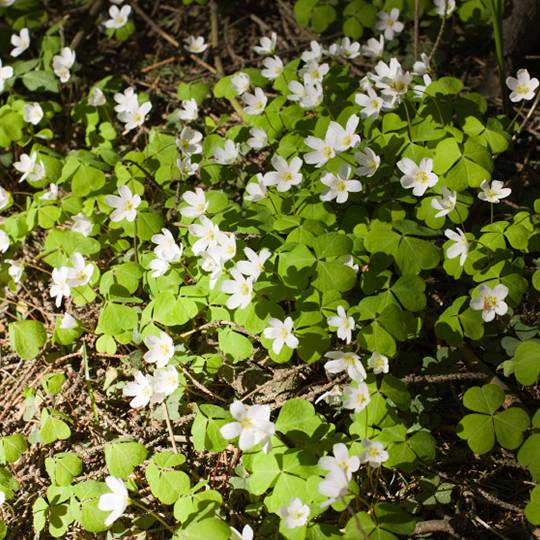
Grasses most commonly affected: Kentucky bluegrass, bentgrass, fescue, and ryegrass.
Oxalis (from the oxalidaceae family) is a flowering, low-growing weed that is often mistaken for clover. There are some 850 different species of oxalis with wood sorrels (oxalis corniculata) being the largest. This edible plant–sometimes referred to as sour grass–does well in warm, moist soil. Some species of oxalis are sought after as decorative, flowering plants due to their attractive appearance, but others (oxalis corniculata, o. debilis, and o. latifolia) can become bothersome, invasive weeds in your yard. The root systems form fibrous networks that are very difficult to remove. And since some varieties have seed pods that send forth an excess of seeds at a mere touch, they tend to reproduce rapidly.
Oxalis Signs and Symptoms
Most species of oxalis have three pale-green to purplish heart-shaped leaves, earning them the nickname “false shamrocks.” Blooming from mid-spring well into the fall, the petite five-petal flowers are often yellow, but some species have purple, white, or pink flowers. The leaves fold up at night and reopen in the morning. They tend to do this in harsh sunlight as well. These hardy weeds prefer shaded areas, but are capable of growing in the sun with adequate moisture.
Oxalis Prevention
Oxalis will quickly fill in thinning areas or bare patches of a lawn, so your best defense is to keep grass well maintained and lush. It’s also important to avoid overwatering as these invaders prefer moist conditions. But if you find some of these clover-like weeds growing in your yard, here’s what you can do:
- Oxalis can usually be handpicked or weeded, but it’s important to do so before the plants flower and set seed. Once that occurs, you will have to continue weeding as they reappear.
- Unfortunately, oxalis corniculata is resistant to many weed killers, but some success has been had with broadleaf weed herbicides like glyphosate. It should be applied in the spring, during the active growing season, and will most likely need repeated applications.
- Covering the weeds with mulch helps to prevent them from growing and seeding because they have no exposure to sunlight. This is sometimes an effective control method for gardens and plant beds, but it won’t work for the lawn.
- After using a lawn mower on an area where oxalis grows, hose off or air spray the machine to make sure no seeds remain before mowing grass that is weed-free.
Call Cardinal Lawns today to discuss how to make your lawn look its best.
Need Help with Oxalis?
Call Cardinal Lawns today at 614-808-4446 and let's talk about how we can help treat for Oxalis and other common Ohio lawn weeds.
Get a Free Quote